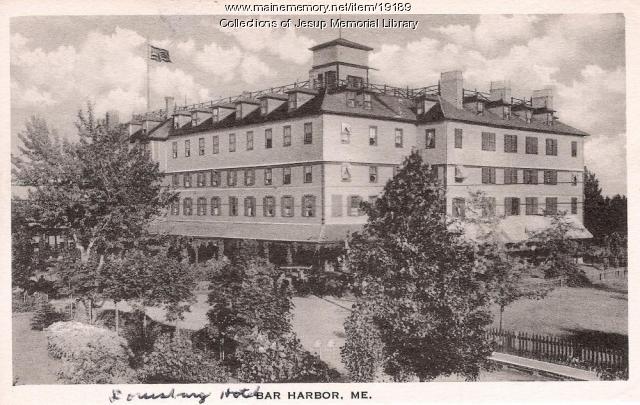Keywords: Nature
Item 31701
Audubon Nature Center, Scarborough, ca. 1972
Contributed by: Scarborough Historical Society & Museum Date: circa 1972 Location: Scarborough Media: Photographic print
Item 135796
Portland Society for Natural History building, ca. 1862
Contributed by: Maine Historical Society Date: circa 1862 Location: Portland Media: Ink on paper
Item 49985
Assessor's Record, 18-28 Elm Street, Portland, 1924
Owner in 1924: Portland Natural History Society Use: Land only
Item 151491
Contributed by: Maine Historical Society Date: 1925–1926 Location: Saco Client: York Institute Architect: John Calvin Stevens and John Howard Stevens Architects
Item 151631
Fitzgerald house, Brighton, Vermont, 1888
Contributed by: Maine Historical Society Date: 1888 Location: Brighton, VT Client: George H. Fitzgerald Architect: John Calvin Stevens
Exhibit
CODE RED: Climate, Justice & Natural History Collections
Explore topics around climate change by reuniting collections from one of the nation's earliest natural history museums, the Portland Society of Natural History. The exhibition focuses on how museums collect, and the role of humans in creating changes in society, climate, and biodiversity.
Exhibit
For one hundred years, Acadia National Park has captured the American imagination and stood as the most recognizable symbol of Maine’s important natural history and identity. This exhibit highlights Maine Memory content relating to Acadia and Mount Desert Island.
Site Page
Mount Desert Island: Shaped by Nature - Cottagers
"… cottagers and visitors who were inclined toward nature and artistic or intellectual pursuits. Overall, their homes and hotels were less extravagant…"
Site Page
Mount Desert Island: Shaped by Nature - Inns
"… Off-season, Ted worked in the woods and turned natural materials into items to sell: “My dad used to do quillwork when I was a boy – and I always…"
Story
From Naturalists to Environmentalists
by Andy Beahm
The beginnings of Maine Audubon in the Portland Society of Natural History
Story
Ivory-billed Woodpeckers
by Doug Hitchcox, Staff Naturalist at Maine Audubon
The Ivory-billed Woodpecker in the Portland Society of Natural History Collections
Lesson Plan
Wabanaki Studies: Stewarding Natural Resources
Grade Level: 3-5
Content Area: Science & Engineering, Social Studies
This lesson plan will introduce elementary-grade students to the concepts and importance of Traditional Ecological Knowledge (TEK) and Indigenous Knowledge (IK), taught and understood through oral history to generations of Wabanaki people. Students will engage in discussions about how humans can be stewards of the local ecosystem, and how non-Native Maine citizens can listen to, learn from, and amplify the voices of Wabanaki neighbors to assist in the future of a sustainable environment. Students will learn about Wabanaki artists, teachers, and leaders from the past and present to help contextualize the concepts and ideas in this lesson, and learn about how Wabanaki youth are carrying tradition forward into the future.
Lesson Plan
Grade Level: 3-5, 6-8, 9-12
Content Area: Science & Engineering, Social Studies
This lesson plan will give middle and high school students a broad overview of the ash tree population in North America, the Emerald Ash Borer (EAB) threatening it, and the importance of the ash tree to the Wabanaki people in Maine. Students will look at Wabanaki oral histories as well as the geological/glacial beginnings of the region we now know as Maine for a general understanding of how the ash tree came to be a significant part of Wabanaki cultural history and environmental history in Maine. Students will compare national measures to combat the EAB to the Wabanaki-led Ash Task Force’s approaches in Maine, will discuss the benefits and challenges of biological control of invasive species, the concept of climigration, the concepts of Traditional Ecological Knowledge (TEK) and Indigenous Knowledge (IK) and how research scientists arrive at best practices for aiding the environment.



















